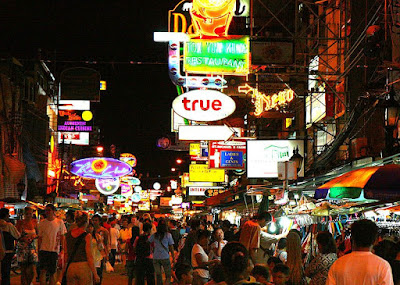On the Edge of a Chasm: Reflections at Wawa
I want to be in a myth. I would be the mythical mistress who freed Bernardo Carpio. Because recently, I learned that freedom does have a threshold. Every freewheeling spirit arrives at a linear fast lane; even diversity becomes incessantly monotonous.
Everyone needs a break.
Along the gorge at the foothills of the Sierra Madre in Rodriguez (formerly Montalban), Rizal flows the Wawa River. In the early 1900s, the Americans built the Wawa Dam to serve as the primary water source of Metro Manila. Pollution due to rampant quarrying and dredging impelled the now defunct NAWASA to halt its operations there sometime in the 1950s.
Traces of Wawa’s lively past are seen all over the place: empty tunnels left by the decommissioned pipes, a bygone intake station with deep holes kept precariously gaping by dwellers who made a livelihood out of the bars of steel that used to cover them.
Wawa is a sanctuary for the free spirit. There, one can defy gravity by climbing the gigantic rocks surrounding the dam or one can let loose by uniting with the force – rappelling and free falling to the river like the local children who skip classes for a thrill.
Yet, Wawa reminds its visitors the limits of liberty. The steep pathways around the mountain that overlook the boulder-strewn gully; the wide open old aqueducts – they call for caution. This paradise has its own realities. Understanding this subdues one’s urban restlessness. One false move may lead into something irreparable.
Somewhere near is the Pamitinan Cave--the very cave where the Supremo Andres Bonifacio, together with seven (or eight) other Katipuneros first declared their independence from Spain, before the June 12, 1898 declaration in Kawit. Up to this day, it is said that the wall bears Bonifacio’s inscription: Viva la Independencia Filipina!
On the edge, in a standstill, we become one with Andres Bonifacio and Bernardo Carpio in their struggle for freedom. The Montalban gorge offers inviting options. However, at the end of the day, everyone retreats from the edge.
Wawa is worth the break.
All photos (c) The Smart Gypsy
Originally written on March 5, 2010
Sources:
1. Environmental Science for Social Change. (2010, February 5). Historical Mapping for Marikina Flooding: learning from the past – land, people and science. Retrieved 06 March 2010, from ESSC website: http://essc.org.ph/content/view/273/1/
2. National Historical Institute (n.d.). Andres Bonifacio (1863-1897): Great Plebian and Patriot. Retrieved 06 March 2010, from NHI website: http://www.nhi.gov.ph/index.php?option=com_content&task=view&id=199
3. Quizon, Mona Lisa H. (2009, June 12). Filipinos declared independence 6x. Retrieved 06 March 2010, from the Inquirer website: http://www.inquirer.net/specialfeatures/independenceday/view.php?db=1&article=20090612-210052
Everyone needs a break.
 |
| The Wawa Dam used to be the primary water source of Metro Manila, before Angat Dam in Bulacan took its place. |
Along the gorge at the foothills of the Sierra Madre in Rodriguez (formerly Montalban), Rizal flows the Wawa River. In the early 1900s, the Americans built the Wawa Dam to serve as the primary water source of Metro Manila. Pollution due to rampant quarrying and dredging impelled the now defunct NAWASA to halt its operations there sometime in the 1950s.
 |
| Tourists still visit Wawa Dam for some quick thrill and R&R, as of writing. |
Traces of Wawa’s lively past are seen all over the place: empty tunnels left by the decommissioned pipes, a bygone intake station with deep holes kept precariously gaping by dwellers who made a livelihood out of the bars of steel that used to cover them.
 |
| An abandoned intake station |
Wawa is a sanctuary for the free spirit. There, one can defy gravity by climbing the gigantic rocks surrounding the dam or one can let loose by uniting with the force – rappelling and free falling to the river like the local children who skip classes for a thrill.
 |
| A colleague looks out from the former intake station |
Somewhere near is the Pamitinan Cave--the very cave where the Supremo Andres Bonifacio, together with seven (or eight) other Katipuneros first declared their independence from Spain, before the June 12, 1898 declaration in Kawit. Up to this day, it is said that the wall bears Bonifacio’s inscription: Viva la Independencia Filipina!
On the edge, in a standstill, we become one with Andres Bonifacio and Bernardo Carpio in their struggle for freedom. The Montalban gorge offers inviting options. However, at the end of the day, everyone retreats from the edge.
Wawa is worth the break.
All photos (c) The Smart Gypsy
Originally written on March 5, 2010
Sources:
1. Environmental Science for Social Change. (2010, February 5). Historical Mapping for Marikina Flooding: learning from the past – land, people and science. Retrieved 06 March 2010, from ESSC website: http://essc.org.ph/content/view/273/1/
2. National Historical Institute (n.d.). Andres Bonifacio (1863-1897): Great Plebian and Patriot. Retrieved 06 March 2010, from NHI website: http://www.nhi.gov.ph/index.php?option=com_content&task=view&id=199
3. Quizon, Mona Lisa H. (2009, June 12). Filipinos declared independence 6x. Retrieved 06 March 2010, from the Inquirer website: http://www.inquirer.net/specialfeatures/independenceday/view.php?db=1&article=20090612-210052




Comments
Post a Comment